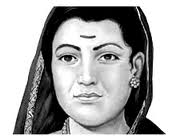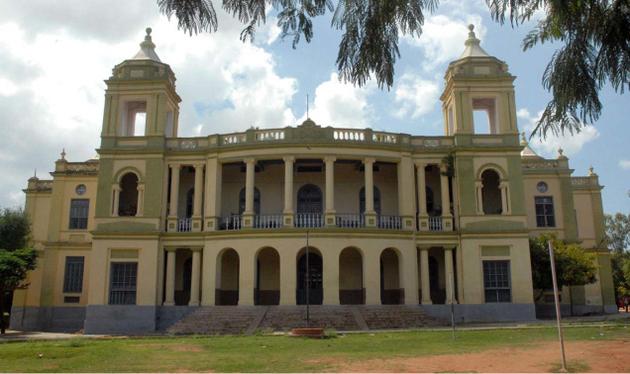Dr. Chandraiah Gopani
The concept of emancipation is occupied a central theme for Dalit movements and politics both in colonial and post-colonial period. There were organic leaders among Dalits during Nizam period from 1906 to 1953. The period between 1906-1953 was crucial for vibrant Dalit activities and autonomous assertions in Hyderabad state. Although Nizam was autocratic there was urban centric Dalit leadership which played a vital role in mobilizing and organizing Dalits. The leaders like Bagya Reddy Varma, Arigay Ramaswamy, B. Shamsundhar, B.S Venkat Rao, P.R Venkat Swamy and etc. have envisaged the emancipation of untouchables against caste/class inequalities.
Arigay Ramaswamy was considered to be a popular among Dalit leaders during Nizam period. His contribution towards resolving inter caste hierarchies among Dalits, a movement for inter caste marriages and building the broader Dalit struggles are well-known. He was active member in many organizations; he himself established various organizations like Sunita BalaSamaj, Adi-Hindu Jathiyonati Sabha, Arundatiya Mahasabha and Bhoomananda Swamy Mandali etc. for the welfare of the Dalits. Though P.R Venkat Swamy’s historical work “Our Struggle for emancipation” (1955) has documented some of Arigay Ramaswamy contributions, there is a considerable negligence and lack of recognition of his work in popular Dalit discourse.This article is to document his contribution and struggle in uniting the Dalits.
Arigay Ramaswamy; 1885-1973
Arigay Ramaswamy (1885-1973) was a Dalit social reformer and writer who worked with galaxy of Dalit leaders like Bagya Reddy Varma, B.S Venkat Rao, P.R Venaktswamy, Mudigonda Laxmaiah etc. in Nizam period. Ramaswamy born to a Tonga driven Balaiah in Secundrabad at Ramankole in 1885, Ranga Reddy district. He belongs to Mala caste. Ramaswamy went to Baptist mission school, but due to extreme poverty, he could not continue the school, then he joined the Nizam’s railway services as an office boy in Audit office . He left the job and joined Engineering workshop as a carpenter. He worked for some time in Furniture Manufacturing workshop of Lever and Co. He could not work there, again he was appointed as Record Tracer in Railway Agent’s Office. Soon he posted as a Number Taker at Purna. Later he was promoted as Ticket collector at the Bolarum Railway station, after some years he was transferred to Secundrabad as Suburban Ticket Checker, he came under the influence of “Achalla Bodha” or “Achala Thatva” propagated by his guru MandippelaHanumantha Rao in 1912.This Achalla Bodha or Achalla Thatva is popular among subaltern saints and communities in Telangana. Scholars are argued that though Dunna Idasu (1811-1919) was not a first person to propagate it he was certainly a popular figure in propagating it among Dalit communities.
Arigay Ramaswamy while he was involving in Achala Bodha activities, he got married with Rajamma who died in 1921. Later he married to Lalitabai in 1929. He had three sons. Because of his active involvement in the reform activities, he left the job and started to work fully as a leader for depressed castes. He also entered into small business of brick making in Kumariguda, this business was for his family survival. Many organisations he established for the welfare of the depressed castes in Nizam period. Since he believed in Achala Bodha, he engaged in tracing the identity of untouchable castes as an aboriginal of this country. In many meetings he argued for separate identity for untouchables that is Adi-Hindu identity. In his entire public life, he established many organisations for the welfare of the Dalits.
List of organisations started by Arigay Ramaswamy
Organization Name Year
1. Suneethi Bala Samajamu 1912
2. Adi-Hindu Jathiyonati Sabha 1922
3. Adi-Hindu Mahasabha 1927
4. Arundatiya Mahasabha 1931
5. Bhumananda Guru Mandali 1931
6. Hyderabad State Dalit Jatiya Sangh NA
7. ArundatiyaYuvajanaMruthyuSahakara Sangham NA
Since Ramaswamy was influenced by Achala bhoda tradition he began to organize people around his localities through Sunitha Bala Samaj in 1912. The aim of the organisation is to spread the nonviolence, temperance, and work against alcohol etc. among untouchables. He also deeply believed that untouchables are inhabitants of this country; hence they are true Adi-Hindus. He also established “Adi-Hindu Kreeda Sangam’ through which he encouraged many untouchable youths to participate in the sports. His wife Lalita Bai was also participated and encouraged many people to take part and regularly organized meetings for youths. There was incidence where Dalit youth in Nizam period participated in football Olympics. Arigay Ramaswamy also started a ‘Friends union’ which basically helped in assisting in marriage and other festival for poor people
He was a member of the Hyderabad Municipal Council from 1933-1940. He was one of the delegates to the All-India Depressed classes conference held at Nagpur under the president ship of R.B.N Shivraj on 18-20 July 1942. He was nominated as a member of the constituency Assembly and then to the provisional parliament from 1950-52. He contested as congress nominee in the first general election (1952) for Hyderabad Legislative Assembly from Vikarabad (General G and SC) seat and got elected. Later he was nominated as Deputy Minister for Agriculture and civil supplies, Government of Hyderabad from 1954 to October 1956. When he was minister, he undertook many welfare programmes towards downtrodden in particular and poor in general.
Arigay Ramaswamy was a poet, he wrote a century (Satakam) poem with the title “AnumuAnumuAav Booma Arigay Rama”. In his poetry he reflected on many social issues like untouchability, poverty, Achala Bodha, caste discrimination, farmers suicides etc. When Suravaram Pratap Reddy published a “Golkonda Kavula Sanchika” (A poetry of Telangana Writers), Arigay Ramaswamy contributed his poetry on farmers problems in the publication. He was the only Dalit whose poetry was published in the book. He also published a small booklet on “AntaranithanamSamasya-Parishkaram” (Untouchability Problem-Solution) . This booklet argues that untouchables are inhabitants of true Adi-Hindus, because of Brahmanicalhegemony they have been exploited and suffering from caste system. Although Arigay Ramaswamy believed in Adi-Hindu identity like Bagya Reddy Varma, they differed in many issues, particularly in resolving the internal differences among Dalits. The following section deals with contested views of Arigay Ramaswamy and Bagya Reddy Varma on Dalit emancipation.
Among all Dalit leaders in Nizam period ArigayRamswamy had a different view on the caste hierarchy among Dalits. He also had a strong opinion that unless untouchable caste resolves themselves the internal differences and caste practice, the unity among them will be futile. His approach was to see that Adi-Hindus (untouchables) emancipation from below. He not only preached the Justice to the lowest among low but also initiated his efforts. While most of the Mala leaders talked development to Dalits in general, Arigay Ramaswamy was strongly fought for lowest among low, particularly for the most marginalized Madigas. Madigas are considered lowered to Malas within the caste system. From the beginning Ramaswamy questioned the biased attitude of Bagya Reddy Varma towards Madigas. Though Arigay appealed many times to Bagya Reddy Varma for welfare of all. Bagya Reddy was not cooperated with his ideas. Then Arigay Ramaswamy was initiated and encouraged to start a separate organization for Madigas welfare under the banner of Arundatiya Mahasabha in 1931 . The rift between Bagya Reddy Varma and Arigay Ramaswamy was reported by P.R Venataswamy in his book “our struggle for emancipation”, the extract follows
“The gulf of difference between the Malas and Madigas was widening day by day. Bhagya Reddy and his followers struck to their guns and by their irreconcilable attitude, they were becoming very unpopular. Girkala Mallesh Rao, a well-wisher of the Madigas, co-operated with Arigay Ramaswamy in the matter of unification of the Malas and Madigas. He thought seriously about it and pressed Arigay Ramaswamy to take some drastic steps in that respect. He suggested a separate organization for the Madigasto achieve their legitimate rights. But Ramaswamy hesitated to take any hasty step in that direction lest it might cause a split in the community. So, he approached Bhagya Reddy and sincerely pleaded for the cause of the Madigas to give them a place of equality with the Malas. But Bhagya Reddy ridiculed his utopian ideas. Ramaswamy warned him of the evil consequences of his short-sighted policy. Bhagya Reddy bluntly told him to have his own way; he was not in the least bothered about it” .
While there was galaxy of leaders from Mala caste, Arigey Ramaswamy was the only one who consistently sympathetic to Madigasand other lower castes’ empowerment. Arigay Ramaswamy contestation with Bagya Reddy Varma on the internal problems of depressed castes have clearly indicates the paradox in Dalit leadership in representing all Scheduled Castes and consolidating them. This paradox is continued to exist in contemporary Dalit movement. The caste hierarchies and lack of inter-caste marriages among depressed castes is continued to persist in the cotemporary times. ArigayRamaswamy contributions are invisible in the popular Dalit discourse. Because neither Malas nor Madigas own him. Most of the writings which are published on Dalit leaders and movements in Hyderabad state tend to focuses on Bagya Reddy Varma, B.S Venkat Rao, Shyam Sundhar etc. Except P.R Venkatswamy book “Our Struggle for Emancipation” (1955) no other writings document Arigay Ramaswamy contribution. Malas are not own as much; they own other leaders like Bagya Reddy Varma, Madigas also not pay much attention partly because they are unaware and organically, he does not belong to their caste though he was sympathetic to Madigas. Because of this competing leadership and rivalry between Scheduled Castes are not consolidated under one platform and one leader both in colonial and contemporary times. Today’s Dalit movements have to forward the spirit of Arigay Ramaswamy in addressing internal disparities. ArigayRamaswamy was strongly believed in buildinguniform identity to untouchable by addressing internal contradictions among Dalit communities. While Dalitsare not preferring to subscribe Arigey Ramaswamy’s inclination towards congress politics, there is certainly a need of addressing the internal disparities among Dalits for which Arigey Ramaswamy invested is efforts.The Arigay Ramaswamy spirit of encouraging and arranging inter caste marriages among depressed castes, addressing disparities and justice to lowest of the low are important aspects to build the unity among Dalits and consolidate them under one platform for their liberative politics.
~
Notes
1. Kshirsagar, R.K. (1994) “Dalit Movement and India and Its Leaders”, M.D Publications Pvt Ltd, New Delhi. Pp-166
2. Dunna Idasu belongs to Madiga community born in Nalgonda district, but his disciplines and followers are more from Kalvakurthy, Nagarkurnool, Achampet from Mahaboob Nagar
3. Arigay, Ramaswamy. (2012) “Kaviga Arigay Ramaswamy”, Neeli Zanda, Issue-3, Volume-8, PP.3.
4. Arigay, Ramaswamy. (2011 and 2012) “Antaranithanam-Samsya Parishcharam”, Neeli Zanda,Part-1, Part-2, (December 1-15, 2011, pp.12 and December 16-31, 2011, pp.15)
5. Venkatswamy.P.R “Our Struggle for Emancipation; Dalit Movement in Hyderabad state”, Hyderabad Book Truest, Hyderabad. Pp.
6. Venkatswamy.P.R (2019) “Our Struggle for Emancipation; Dalit Movement in Hyderabad state”, Hyderabad Book Trust and Bojja Tharakam Trust, Hyderabad. Pp. 90-91
~~~
Dr. Chandraiah Gopani is an Assistant Professor in G.B Pant Social Science Institute, Allahabad Central University. He has been teaching and doing research on Caste, Dalit Studies, Anti-Caste Intellectual Traditions, Dalit Youth and Bahujan Musical Traditions and literatures. He regularly writes in English and Telugu.










